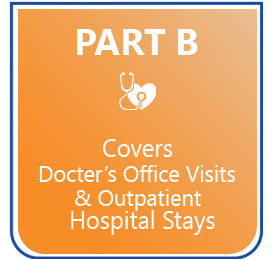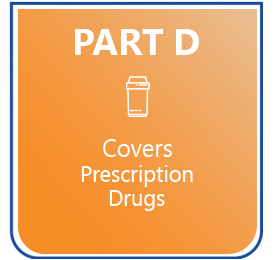Medicare Part D helps cover prescription drugs. You can enroll in a stand‑alone Prescription Drug Plan (PDP) that works with Original Medicare, or you can choose a Medicare Advantage plan that includes drug coverage (MA‑PD). All Part D plans are offered by Medicare‑approved private insurers.
Medicare Part D covers:
Every Part D plan must provide at least the standard level of coverage set by Medicare, but formularies (lists of covered drugs) and cost‑sharing vary by plan. Drugs are placed in cost tiers; lower tiers generally have lower copayments than higher tiers.
- Formulary (covered prescription drugs): Each plan publishes a list of covered generic and brand‑name drugs.
- Generic drugs: FDA‑approved copies of brand‑name drugs with the same active ingredients, strength, dosage form, and route of administration.
- Tiers:
- Tier 1 – Preferred generics (lowest copayment)
- Tier 2 – Non‑preferred generics
- Tier 3 – Preferred brand‑name drugs
- Tier 4 – Non‑preferred brand‑name drugs
- Tier 5 – Specialty drugs (highest cost‑sharing)
If your prescriber believes a higher‑tier drug is medically necessary, you may ask the plan for an exception to pay a lower copayment.
Medicare Part D Costs
Your total cost depends on the plan you choose and the medicines you take. You may pay some or all of the following:
- Monthly premium
- Annual deductible (no plan may charge more than $590 in 2025; some charge none)
- Copayments or coinsurance for each prescription
- Costs while you are in the coverage gap (if applicable)
- Late‑enrollment penalty (if you go 63 days or more without creditable drug coverage after becoming eligible)
Key 2025 figures:
- Average stand‑alone PDP premium: $40.00
- Projected average MA‑PD drug premium: $13.50
- National base beneficiary premium (used to calculate late‑enrollment penalties and IRMAA): $36.78
- Annual out‑of‑pocket spending cap: $2,000 (indexed annually after 2025)
Medicare Part D Enrollment
You can enroll in Part D if you have Medicare Part A and/or Part B and live in a plan’s service area. You may:
- Join a stand‑alone PDP to add drug coverage to Original Medicare.
- Select an MA‑PD to receive Parts A, B, and D benefits in one plan.
If you enroll in an MA‑PD and later sign up for a stand‑alone PDP, you will generally be disenrolled from the MA‑PD and returned to Original Medicare.
Medicare Part D Eligibility
- Enrollment in Medicare Part A and/or Part B
- Permanent residence in the Part D plan’s service area
Medicare Part D Premiums
Plan premiums vary. In addition to the plan’s premium, higher‑income beneficiaries pay an Income‑Related Monthly Adjustment Amount (IRMAA). Premiums can be paid by:
- Automatic deduction from Social Security benefits
- Direct billing by the plan
- Automatic bank draft or credit/debit card












